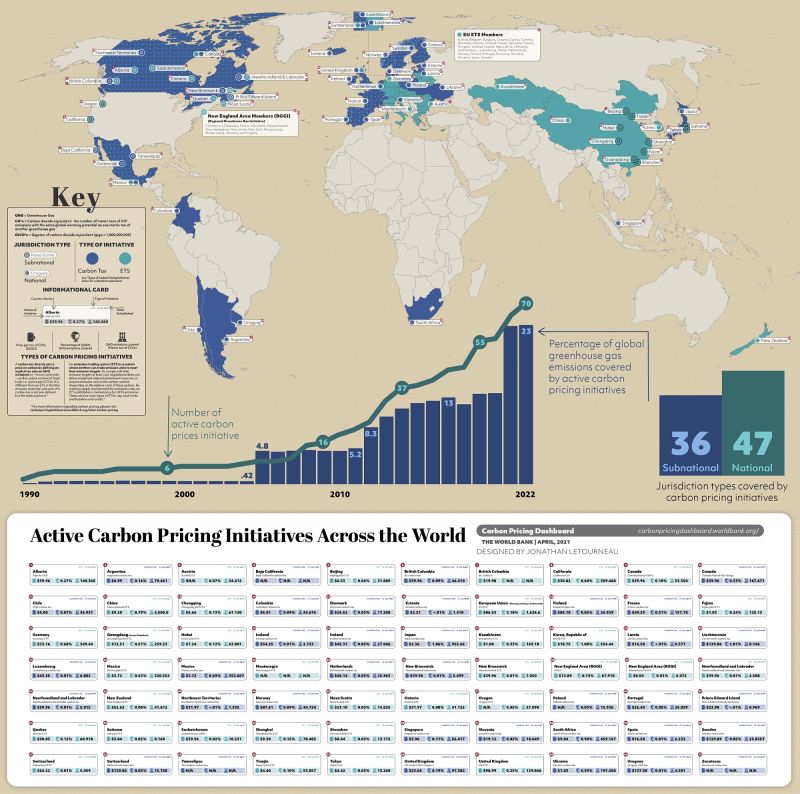A graphic of carbon pricing around the world

Here’s a note from Lubomila Jordanova:
Amazing visual showing carbon pricing around the world.
What is carbon pricing?
Carbon pricing is a policy approach designed to reduce greenhouse gas emissions, in particular reduction in carbon dioxide (CO2) emissions. The goal of carbon pricing is to internalise the environmental costs of emitting carbon dioxide and other greenhouse gases into the atmosphere.
There are two widely accepted mechanisms for introducing carbon pricing:
◼️ Carbon Tax: A carbon tax is an approach where a government or a business sets a price on each ton of carbon dioxide (or its equivalent in other greenhouse gases) emitted into the atmosphere. Companies and individuals then pay this tax based on the amount of carbon they emit. The tax incentivises emissions reductions because higher emissions result in higher costs.
◼️ Cap-and-Trade (Emissions Trading System): In a cap-and-trade system, the government sets an overall cap on greenhouse gas emissions and then issues a specific number of emission allowances or permits. These permits represent the right to emit a certain amount of carbon dioxide. Companies or entities subject to the program must obtain enough permits to cover their emissions. If a company emits less than its allocated permits, it can sell the surplus permits to others. Conversely, companies exceeding their emissions allowances must purchase additional permits. Over time, the government can reduce the overall cap, forcing emissions reductions.
Putting a price on carbon emissions seems to have made an impact in reducing emissions. In Europe, the EU ETS has helped reduce emissions from the power sector by 43% in the region since its inception in 2005.
